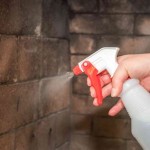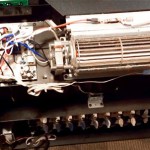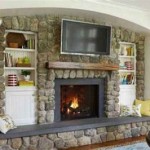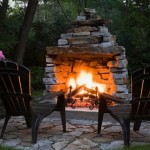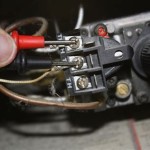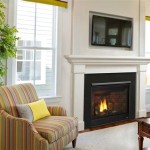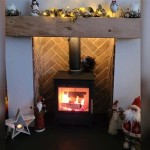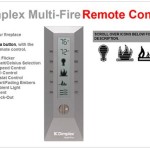Essential Aspects of Fireplace Flue Pipe
A fireplace flue pipe is a crucial component of any wood-burning fireplace. It serves the critical function of channeling smoke and gases produced by the fire out of the house and into the atmosphere. Understanding the essential aspects of a fireplace flue pipe is essential for ensuring the safety and efficiency of your fireplace.
Material: The material of the flue pipe is a major consideration. Common materials include galvanized steel, stainless steel, and clay. Galvanized steel is a budget-friendly option, but it can rust over time. Stainless steel is more durable and resistant to corrosion, making it a superior choice for long-term performance. Clay flue pipes are traditional and offer excellent insulation, but they are fragile and require careful handling.
Diameter: The diameter of the flue pipe should match the size of the fireplace opening. A too-small pipe restri ts airflow, reducing the efficiency of the fire. Conversely, a too-large pipe allows excessive heat and sparks to escape, posing a safety hazard.
Length: The length of the flue pipe is determined by the height of the chimney. The pipe should extend at least 3 feet above the highest point of the roof. This ensures adequate draft and prevents smoke from back-drafting into the house.
Pitch: The pitch of the flue pipe refers to the angle at which it rises. A proper pitch allows condensation to drain efficiently and prevents blockages in the pipe. The recommended pitch is 1/4 inch per foot of horizontal run.
Insulation: Insulated flue pipes help maintain a steady temperature in the pipe, improving draft and reducing creosote buildup. Insulation also prevents heat loss and increases the overall efficiency of the fireplace.
Installation: Proper installation of the flue pipe is crucial for safety and performance. Ensure that the pipe is securely connected to the fireplace and the chimney. Use sealant or fire-resistant caulk at all joints to prevent leaks. Refer to the manufacturer's instructions for specific installation guidelines.
Maintenance: Regular maintenance of the flue pipe is essential to keep it functioning optimally. Have the pipe inspected and cleaned annually by a qualified professional. Cleaning removes soot and debris that can obstruct airflow and pose a fire hazard.
Understanding these essential aspects of fireplace flue pipe will help you make informed decisions when choosing and maintaining your fireplace system. By ensuring a properly sized, installed, and maintained flue pipe, you can enhance the safety, efficiency, and enjoyment of your fireplace for years to come.

Flue Pipe Chimney Greenstone Soapstone Masonry Heaters

Twin Wall Chimney Flexible Flue Liner Stove Pipe

Chimney Installation Cookstove Community

Rock Vent Class A Wall Pass Through Installation Overview

1000mm 1 Meter Length Of Duck Egg Blue Enamel Flue Pipe Enamelled Pipes

7 Inch Double Wall Stove Pipe Insulated Chimney

How To Line A Chimney With Flexible Flue Liner

Insulated Flue Pipe 130mm Lava Fires

Instructions On How To Install A Flue Pipe Ehow

Stainless Chimney Systems Class A Liner Depot
Related Posts

